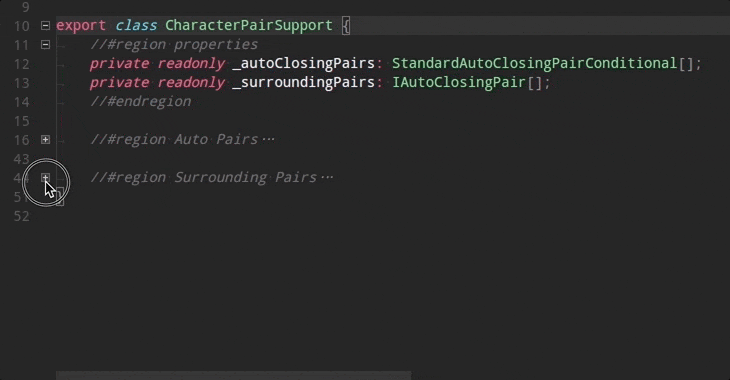
Visual Studio Code Folding Blocks
- Code folding is now handled by Dart Code rather than being done by VS Code based on indenting. This should result in more accurate folding regions and also allows collapsing file headers and directives. This feature relies on support from the Dart analysis server which.
- #region lets you specify a block of code that you can expand or collapse when using the outlining feature of the code editor. In longer code files, it's convenient to collapse or hide one or more regions so that you can focus on the part of the file that you're currently working.
Out-of-the-box, Visual Studio Code includes basic support for most common programming languages. This basic support includes syntax highlighting, bracket matching, code.
Efficient code folding is an important part of productivity when writing code. Folding is part of the larger and more complex task of code navigation. Folding helps in several ways when working with a single file of code.
Being able to see all the method names at once helps with rearranging methods so related methods are near each other, which improves code readability.
Folding methods or classes you aren’t actively editing helps me keep my focus on what I’m actively working on, so I don’t get tempted to do too many things at once, which can hurt productivity. For example while writing a new method, I may notice some other methods that need refactoring, which leads me to database procedures which I want to optimize, which leads me to wanting to change the formatting of the results.
Visual Studio Code Folding All
My favorite command for folding in VS Code is the (Control + K, Control + 2) command. Here the 2 means to fold all regions at the second level, while leaving region 1 and regions greater than 2 unfolded.
In many C# files, (Control K, Control + 3) will collapse all method definitions, because methods are usually at the 3rd level after (1) Namespace, (2) Classes.
Use this page to specify the default code folding settings. For shortcuts on how to expand or collapse code elements, refer to the code folding section.
Vs Code Collapse All Functions
| Item | Description |
|---|---|
| Show code folding outline | Select this checkbox if you want the code folding toggles to be shown in the editor. Clear the checkbox to hide the toggles. |
| Fold by default | Select the code fragments which should be folded by default, that is, when a file is first opened in the editor.
|
